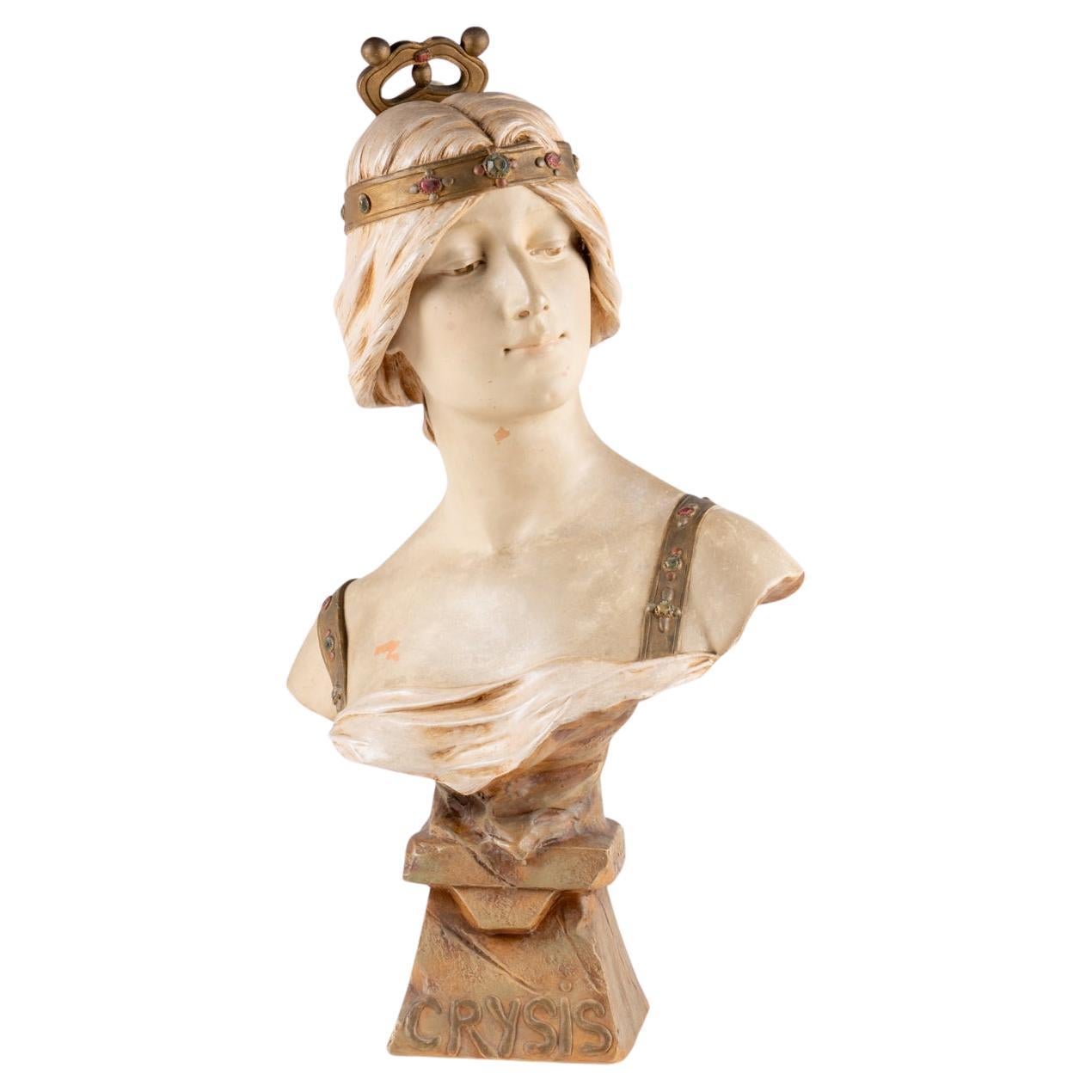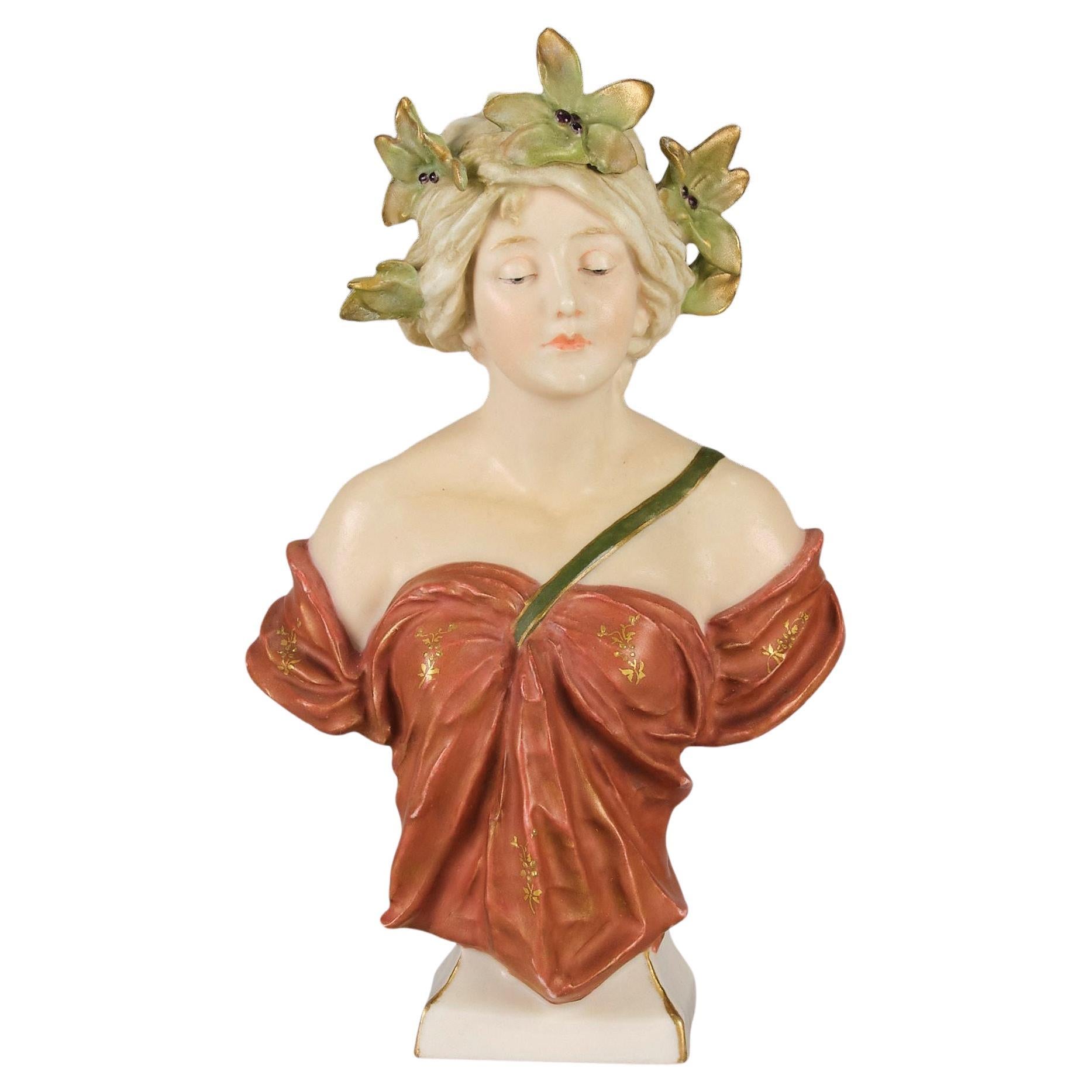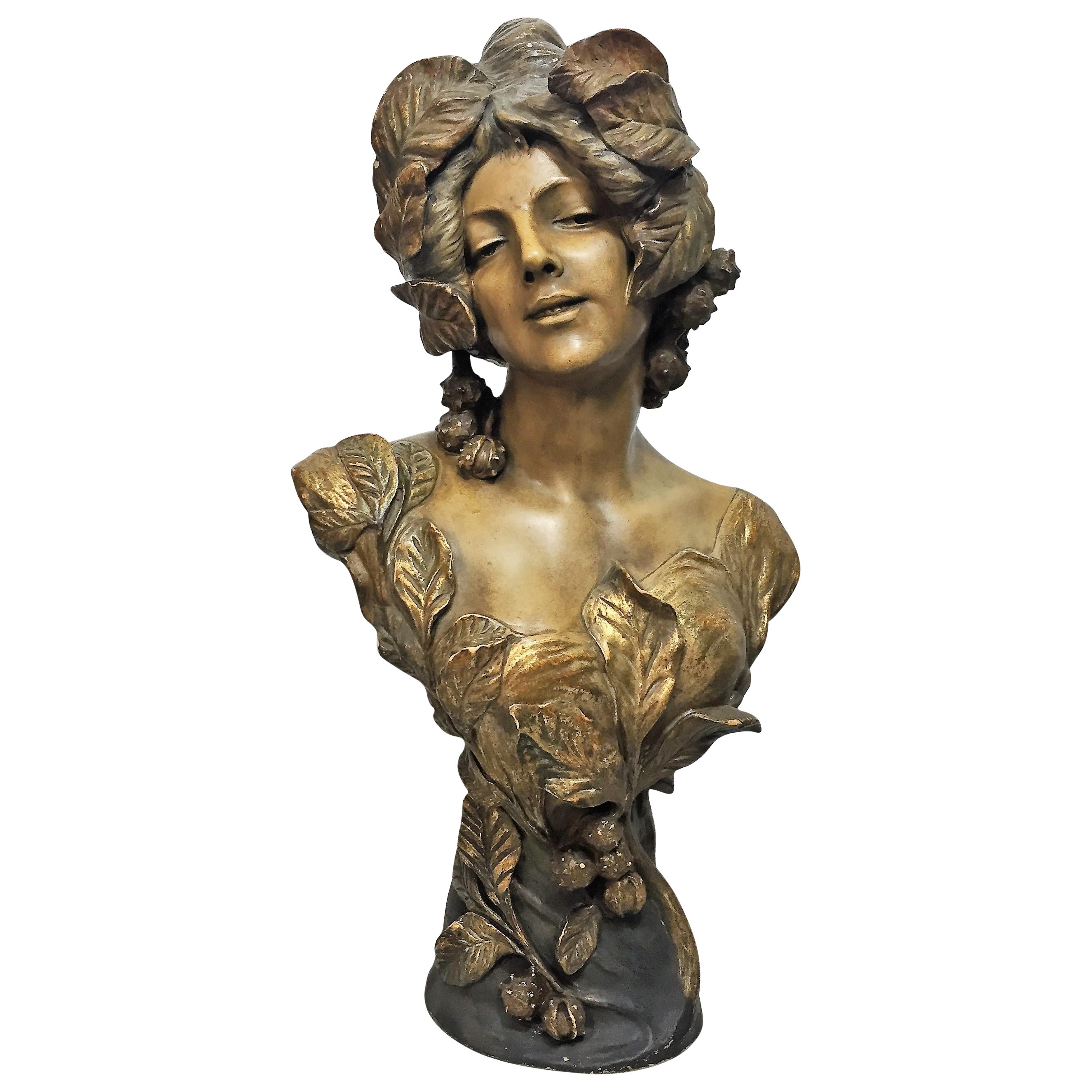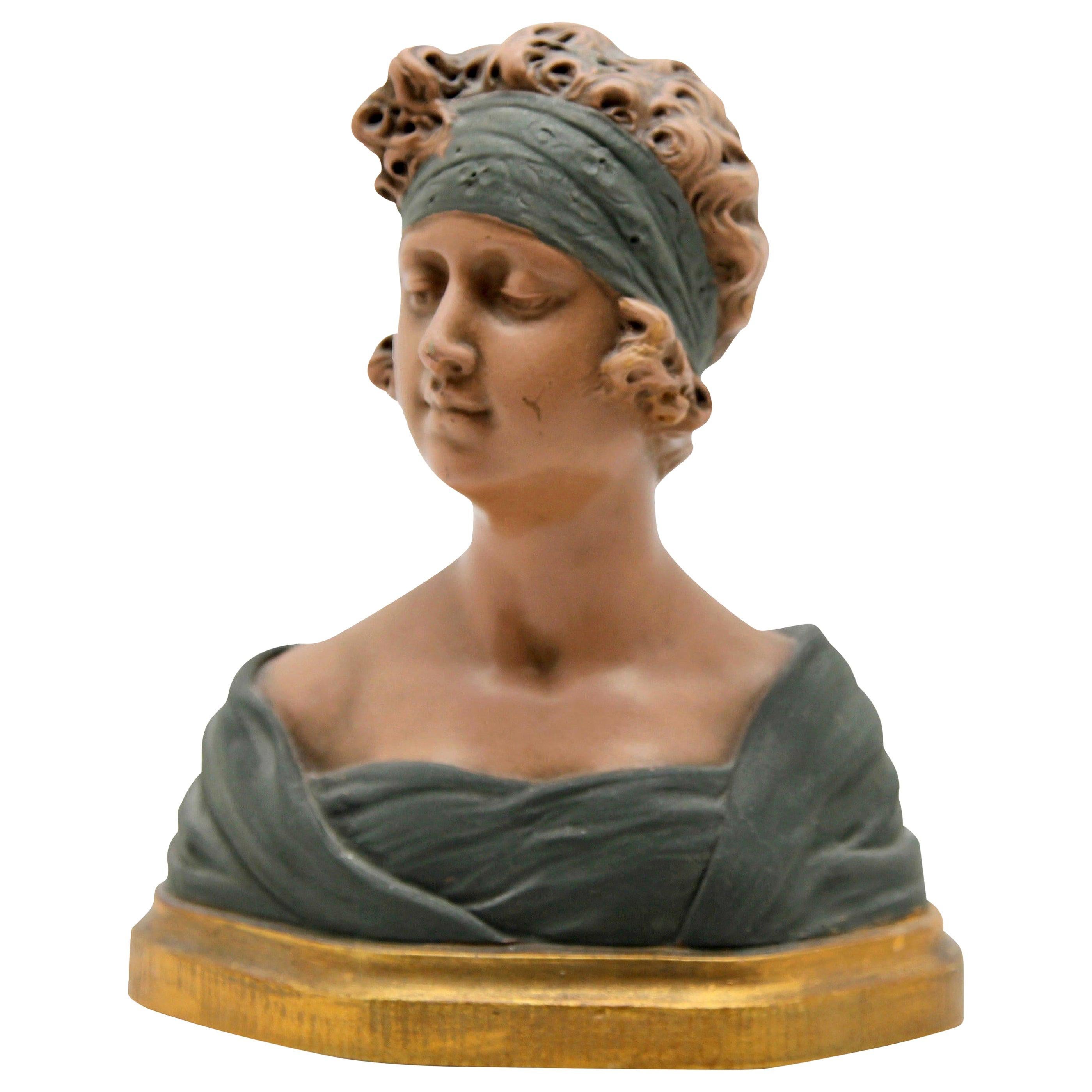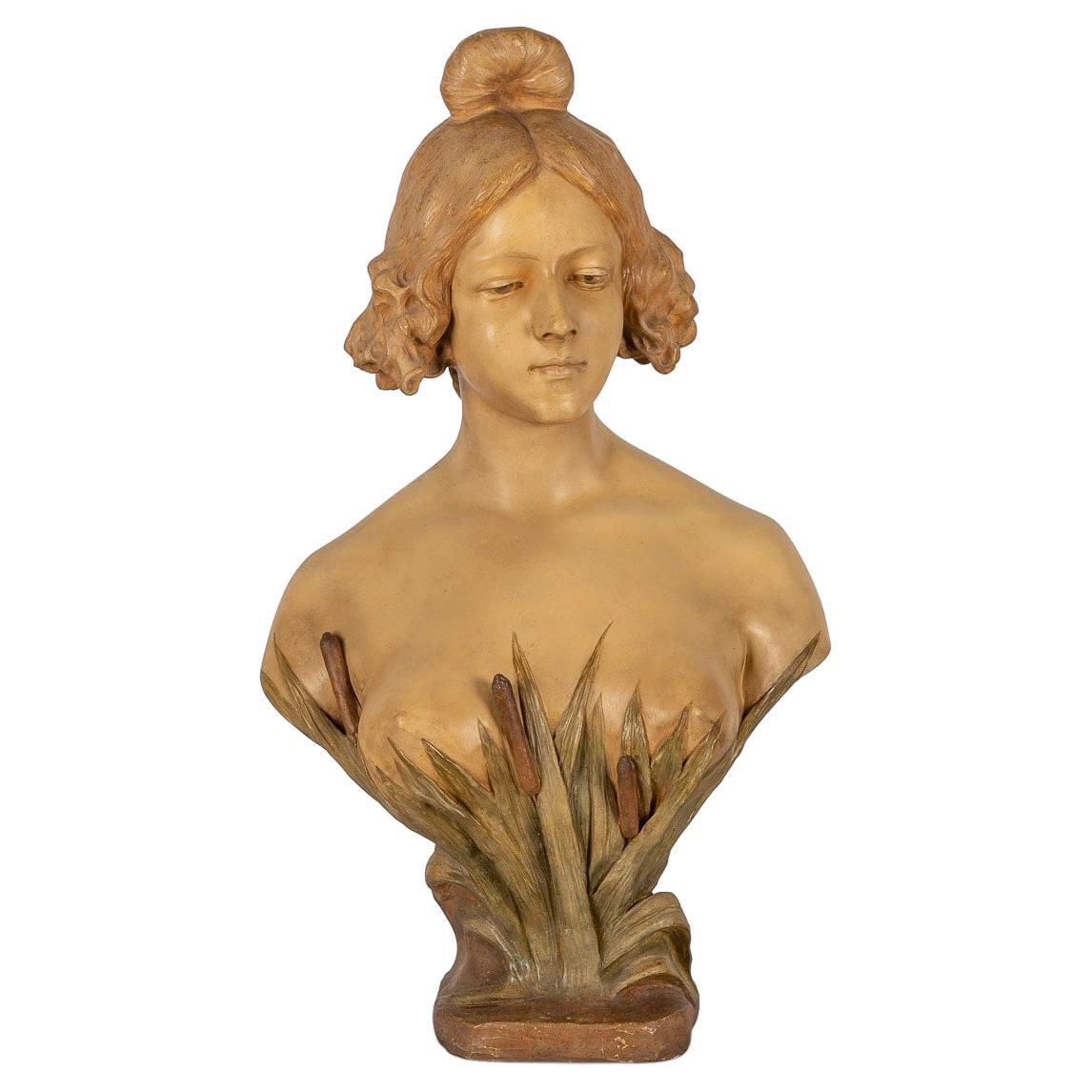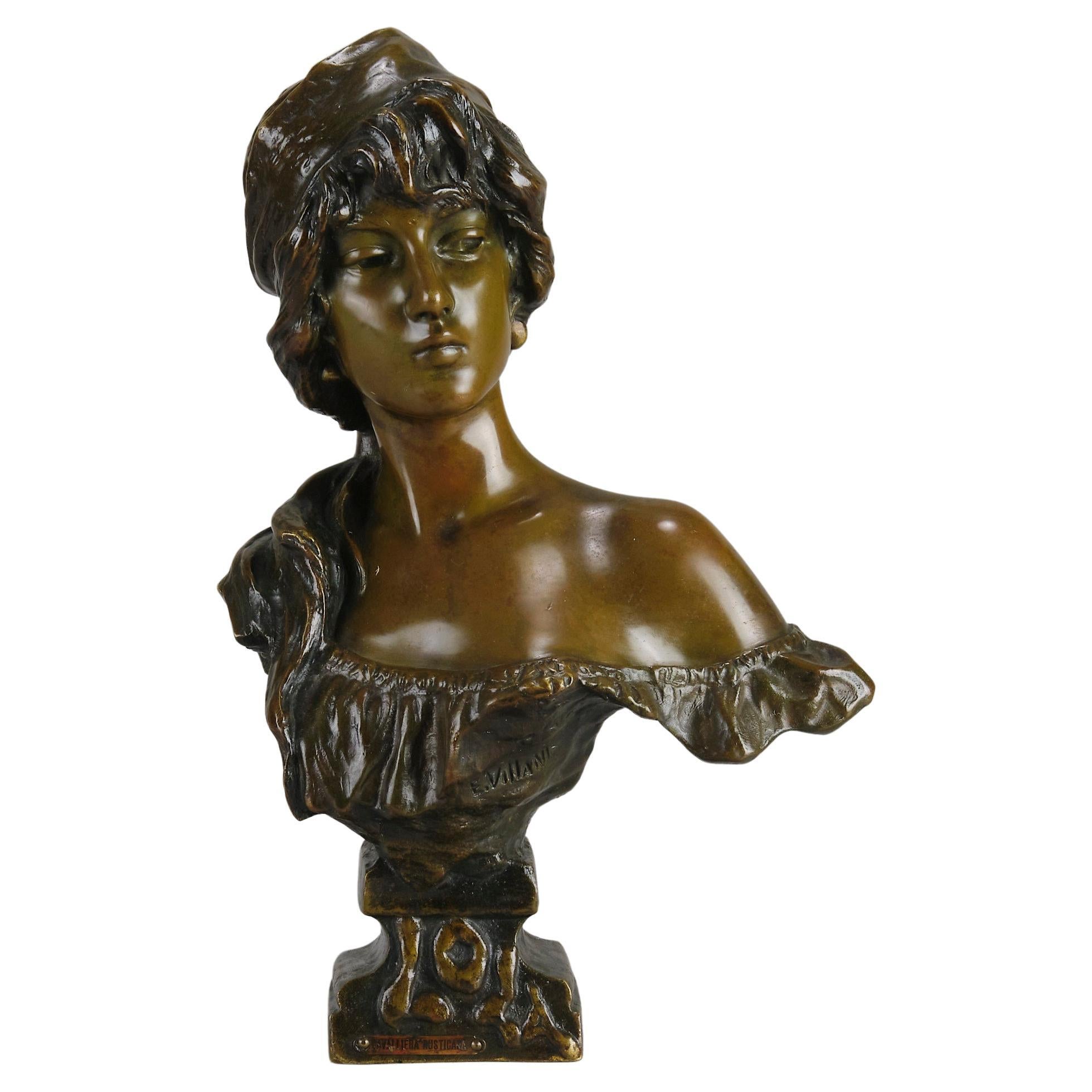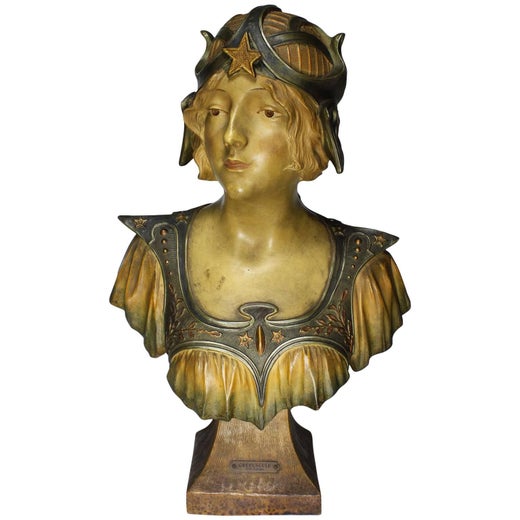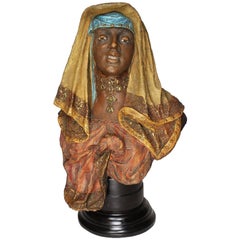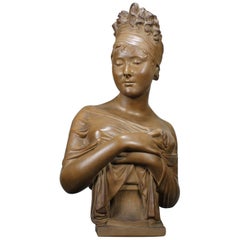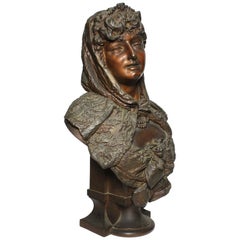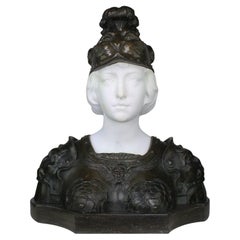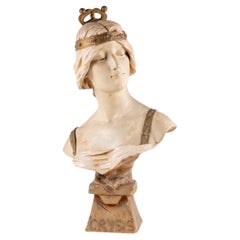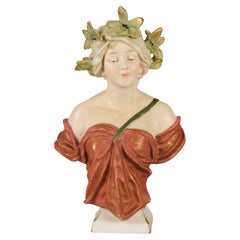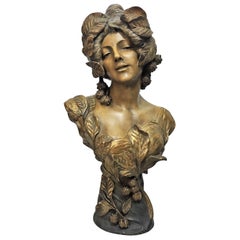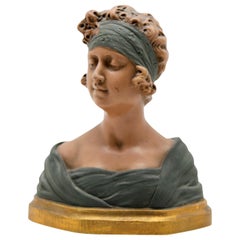French 19th-20th Century Art Nouveau Polychromed Terracotta Bust of "Crépuscule"
About the Item
- Creator:Salesio Lugli (Sculptor)
- Dimensions:Height: 22 in (55.88 cm)Width: 14.38 in (36.53 cm)Depth: 8.5 in (21.59 cm)
- Style:Art Nouveau (Of the Period)
- Materials and Techniques:Terracotta,Polychromed
- Place of Origin:
- Period:1900-1909
- Date of Manufacture:circa 1900
- Condition:Repaired: The top tip (very small) of the star on her forehead has been reattached and touched-up. Wear consistent with age and use. Minor losses. Minor fading. A truly beautiful bust. One tip of forehead star is slightly chipped off. Some minor dirt and discoloration. Very minor edge chippings consistent with age and use.
- Seller Location:Los Angeles, CA
- Reference Number:Seller: Ref.: A2312 1stDibs: LU1796210958801
Salesio Lugli
Salesio Lugli was born in Capri in 1869. He was probably the son of the painter Albano Lugli. He possessed an atelier in his hometown of Capri, where some of his works are exhibited at the Museo Civico "Giulio Ferrari" and the Museo del Palazzo dei Pio. He worked in Paris from around 1900, producing several sculptures in bronze and ivory, pewter and porcelain (Ceramic-Terracotta). He is known for his historical models (French Revolution, Napoleonic war: esp the "Veille de Wagram" bronze lamp) and for his art nouveau maidens. He exhibited twice at the Société des Artistes Français. Around 1906, he became director of the ceramics firm known as the Société des grés de Charenton L.M. Barthe and Mettais-Cartier, sided at Charenton-le-Pont, in the Seine valley to the south-east of Paris. He collaborated with the artists Carmelo Cernigliari-Melilli, Aristide de Ranieri, Affortunato Gory and Ezio Sighieri. Lugli returned to Italy following the outbreak of the First World War and, in 1915, he was made knight of the Ordine della Corona d'Italia. Lugli died in 1936
- ShippingRetrieving quote...Shipping from: Los Angeles, CA
- Return Policy
More From This Seller
View AllAntique Early 1900s Austrian Agra Busts
Terracotta, Wood
Antique 19th Century French Neoclassical Figurative Sculptures
Terracotta
Antique Early 1900s French Rococo Revival Busts
Spelter
Antique 19th Century French Baroque Revival Figurative Sculptures
Marble, Bronze
Antique Early 1900s Italian Country Busts
Alabaster
Antique Early 1900s French Art Nouveau Busts
Bronze
You May Also Like
Antique Early 1900s French Art Nouveau Busts
Terracotta
Antique Late 19th Century Austrian Art Nouveau Busts
Ceramic
Early 20th Century European Art Nouveau Busts
Terracotta
Vintage 1920s Belgian Art Nouveau Busts
Terracotta
20th Century French Art Nouveau Busts
Terracotta
Antique 19th Century French Art Nouveau Busts
Bronze
